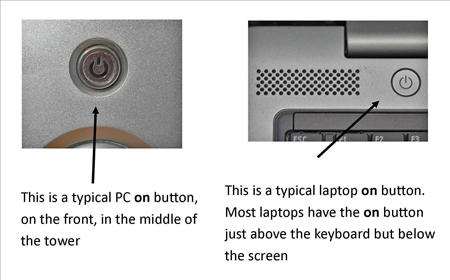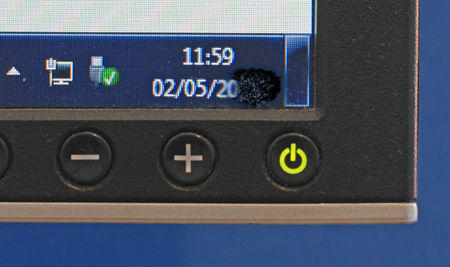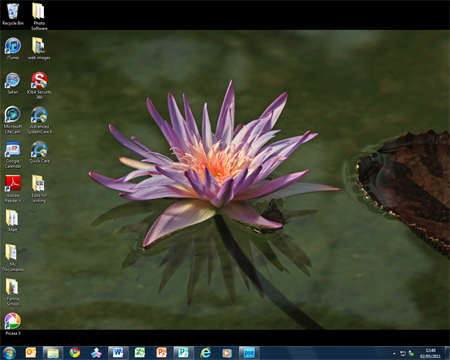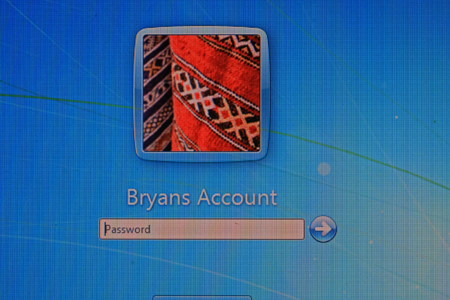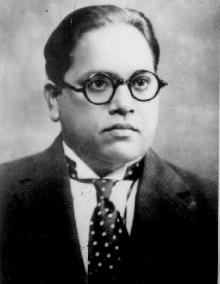The
Constitution of India is the
supreme law of
India. It lays down the framework defining fundamental political principles, establishes the structure, procedures, powers, and duties of government institutions, and sets out fundamental rights,
directive principles, and the duties of citizens. It is the longest
[1] written constitution of any sovereign country in the world, containing 444
[Note 1] articles in 22 parts, 12 schedules and 118 amendments. Besides the Hindi version, there is an official English translation. Dr.
Bhimrao Ramji Ambedkar is widely known as the father of the Indian Constitution.
The Constitution is
federal in nature. Each State and each Union territory of India have their own government. Analogues to President and Prime Minister, is the
Governor in case of States,
Lieutenant Governor for Union territories and the
Chief Minister. The 73rd and 74th Amendment Act also introduced the system of
Panchayati raj in villages and municipalities. Also,
Article 370 of the Constitution gives special status to the state of
Jammu and Kashmir.
The Constitution was adopted by the
Constituent Assembly on 26 November 1949, and came into effect on 26 January 1950.
[2] The date 26 January was chosen to commemorate the
Purna Swaraj declaration of independence of 1930. With its adoption, the
Union of India officially became the modern and contemporary
Republic of India and it replaced the
Government of India Act 1935 as the country's fundamental governing document. To ensure
constitutional autochthony, the framers of constitution inserted Article 395 in the constitution and by this Article the Indian Independence Act, 1947 was repealed.
[3] The Constitution declares India to be a
sovereign,
socialist,
secular,
democratic republic, assuring its citizens of
justice,
equality, and
liberty, and endeavors to promote
fraternity among them.
[4] The words "socialist" and "secular" were added to the definition in 1976 by constitutional amendment (mini constitution).
[5] India celebrates the adoption of the constitution on 26 January each year as
Republic Day.
[6]
The major portion of the
Indian subcontinent was under
British colonial rule from 1857 to 1949. The impact of economic, political and social exploitation during this period helped the gradual rise of the Indian independence movement to gain independence from foreign rule. The movement culminated in the formation of the
Dominion of India on 15 August 1947, along with the
Dominion of Pakistan. The Constitution of India was adopted on 26 November 1949 and came into effect on 26 January 1950, proclaiming India to be a sovereign, democratic republic. It contained the founding principles of the law of the land which would govern India after its independence from British rule. On the day the constitution came into effect, India ceased to be a
dominion of
the British Crown. The Indian constitution is the world's longest constitution. At the time of commencement, the constitution had 395 articles in 22 parts and 8 schedules. It consists of almost 80,000 words and took 2 years 11 months and 18 days to build.
In the United Kingdom the office of the
Secretary of State for India was the authority through whom Parliament exercised its rule (along with the
Council of India), and established the office of
Viceroy of India (along with an Executive Council in India, consisting of high officials of the British Government). The
Indian Councils Act 1861 provided for a Legislative Council consisting of the members of the Executive council and non-official members. The
Indian Councils Act 1892 established provincial legislatures and increased the powers of the Legislative Council. Although these Acts increased the representation of Indians in the government, their power still remained limited. The
Indian Councils Act 1909 and the
Government of India Act 1919 further expanded participation of Indians in the government.
The provisions of the Government of India Act 1935, though never implemented fully, had a great impact on the Constitution of India. Many key features of the constitution are directly taken from this Act. The federal structure of government, provincial autonomy, a bicameral central legislature consisting of a
federal assembly and a
Council of States and the separation of legislative powers between the centre and states are some of the provisions of the Act which are present in the Constitution of India.
In 1946,
British Prime Minister Clement Attlee formulated a
cabinet mission to India to discuss and finalize plans for the transfer of power from the British Raj to Indian leadership as well as provide India with independence under
Dominion status in the
Commonwealth of Nations.
[7][8] The Mission discussed the framework of the constitution and laid down in some detail the procedure to be followed by the constitution drafting body. Elections for the 296 seats assigned to the British Indian provinces were completed by August 1946. The
Constituent Assembly of India first met and began work on 26 November 1946.
The mission consisted of Lord Pethick-Lawrence, the Secretary of State for India, Sir Stafford Cripps, President of the Board of Trade, and A. V. Alexander, the First Lord of the Admiralty. However, Lord Wavell, the Viceroy of India, did not participate.
The Indian Independence Act, passed by the British Parliament on 18 July 1947, divided British India into two new independent states, India and Pakistan, which were to be dominions under the
Commonwealth of Nations until they had each finished drafting and enacted a new constitution. The Constituent Assembly was divided into two for the separate states, with each new Assembly having sovereign powers transferred to it for the respective dominion. The Act also terminated British
suzerainty over the
princely states, each of which was left to decide whether to accede to one or other of the new dominions or to continue as independent states in their own right. However, in most cases the states were so dependent on central institutions that they were widely expected to accede to a dominion.
When the Constitution of India came into force on 26 January 1950, it repealed the Indian Independence Act. India ceased to be a dominion of the British Crown and became a sovereign democratic republic. 26 November 1949 is also known as National Law Day.
The Constitution was drafted by the
Constituent Assembly, which was elected by the elected members of the provincial assemblies.
[9] Dr B.R. Ambedkar, Sanjay Phakey,
Jawaharlal Nehru,
C. Rajagopalachari,
Rajendra Prasad,
Sardar Vallabhbhai Patel,
Kanaiyalal Munshi,
Purushottam Mavalankar, Sandipkumar Patel,
Maulana Abul Kalam Azad,
Shyama Prasad Mukherjee,
Nalini Ranjan Ghosh, and
Balwantrai Mehta were some important figures in the Assembly. There were more than 30 members of the
scheduled classes.
Frank Anthony represented the Anglo-Indian community, and the
Parsis were represented by H. P. Modi. The Chairman of the Minorities Committee was
Harendra Coomar Mookerjee, a distinguished Christian who represented all Christians other than Anglo-Indians. Ari Bahadur Gururng represented the Gorkha Community. Prominent jurists like
Alladi Krishnaswamy Iyer,
Benegal Narsing Rau and
K. M. Munshi,
Ganesh Mavlankar were also members of the Assembly.
Sarojini Naidu, Hansa Mehta,
Durgabai Deshmukh,
Rajkumari Amrit Kaur and
Vijayalakshmi Pandit were important women members.
The first temporary 2-day president of the Constituent Assembly was Dr
Sachidanand Sinha. Later,
Rajendra Prasad was elected president of the Constituent Assembly.
[9] The members of the Constituent Assembly met for the first time on 9 December 1946.
[9]
On the 14 August 1947 meeting of the Assembly, a proposal for forming various committees was presented.
[9] Such committees included a Committee on Fundamental Rights, the Union Powers Committee and Union Constitution Committee. On 29 August 1947, the Drafting Committee was appointed, with
Dr B. R. Ambedkar as the Chairman along with six other members assisted by a constitutional advisor. These members were Pandit Govind Ballabh Pant
Kanaiyalal Maneklal Munshi (K M Munshi, Ex- Home Minister, Bombay),
Alladi Krishnaswamy Iyer (Ex- Advocate General, Madras State), N Gopalaswami Ayengar (Ex-Prime Minister, J&K and later member of Nehru Cabinet), B L Mitter (Ex-Advocate General, India), Md. Saadullah (Ex- Chief Minister of Assam, Muslim League member) and D P Khaitan (Scion of Khaitan Business family and a renowned lawyer). The constitutional advisor was
Sir Benegal Narsing Rau (who became First Indian Judge in International Court of Justice, 1950–54). Later B L Mitter resigned and was replaced by Madhav Rao (Legal Advisor of Maharaja of Vadodara). Owing to death of D P Khaitan,
T T Krishnamachari was chosen to be included in the drafting committee. A Draft Constitution was prepared by the committee and submitted to the Assembly on 4 November 1947. Draft constitution was debated and over 2000 amendments were moved over a period of two years. Finally on 26 Nov. 1949, the process was completed and Constituent assembly adopted the constitution. 284 members signed the document and the process of constitution making was complete.
[10]
The Assembly met in sessions open to the public, for 166 days, spread over a period of 2 years, 11 months and 18 days before adopting the Constitution, the 308 members of the Assembly signed two copies of the document (one each in Hindi and English) on 24 January 1950. The original Constitution of India is hand-written with beautiful calligraphy, each page beautified and decorated by artists from
Shantiniketan including Beohar Rammanohar Sinha and
Nandalal Bose. Two days later, on 26 January 1950, the Constitution of India became the law of all the
States and territories of India. Rs. 1,00,00,000 was official estimate of expenditure on constituent assembly. The Constitution has undergone
many amendments since its enactment.
[11]















